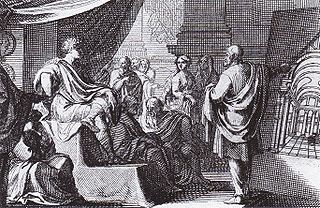
Vitruvius was a Roman architect and engineer during the 1st century BC, known for his multi-volume work titled De architectura. He originated the idea that all buildings should have three attributes: firmitas, utilitas, and venustas. These principles were later widely adopted in Roman architecture. His discussion of perfect proportion in architecture and the human body led to the famous Renaissance drawing of the Vitruvian Man by Leonardo da Vinci.
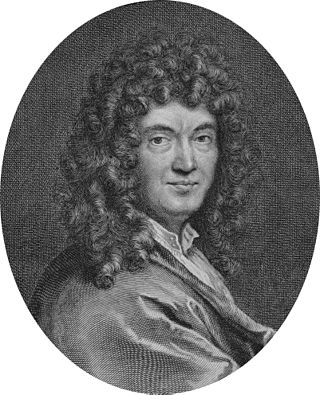
Claude Perrault was a French physician and amateur architect, best known for his participation in the design of the east façade of the Louvre in Paris. He also designed the Paris Observatory and was an anatomist and author who wrote treatises on architecture, physics, and natural history.

Jean Antoine Letronne was a French archaeologist.
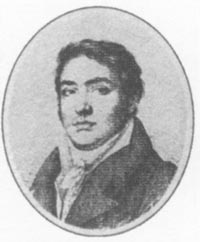
Jean-Pierre Abel-Rémusat was a French sinologist best known as the first Chair of Sinology at the Collège de France. Rémusat studied medicine as a young man, but his discovery of a Chinese herbal treatise enamored him with the Chinese language, and he spent five years teaching himself to read it. After publishing several well-received articles on Chinese topics, a chair in Chinese was created at the Collège de France in 1814 and Rémusat was placed in it.
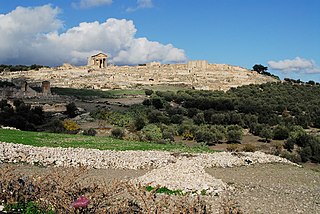
Dougga or Thugga or TBGG was a Berber, Punic and Roman settlement near present-day Téboursouk in northern Tunisia. The current archaeological site covers 65 hectares. UNESCO qualified Dougga as a World Heritage Site in 1997, believing that it represents "the best-preserved Roman small town in North Africa". The site, which lies in the middle of the countryside, has been protected from the encroachment of modern urbanization, in contrast, for example, to Carthage, which has been pillaged and rebuilt on numerous occasions. Dougga's size, its well-preserved monuments and its rich Numidian-Berber, Punic, ancient Roman and Byzantine history make it exceptional. Amongst the most famous monuments at the site are a Libyco-Punic Mausoleum, the Capitol, the Roman theatre, and the temples of Saturn and of Juno Caelestis.
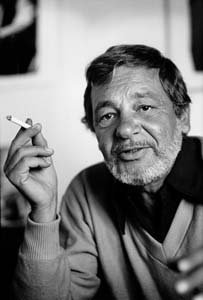
Émile Gardaz was a Swiss radio moderator and author, working for Radio suisse romande since 1955. He was the father of comedian Sophie Gardaz.
Pierre Grimal was a French historian, classicist and Latinist. Fascinated by the Greek and Roman civilizations, he did much to promote the cultural inheritance of the classical world, both among specialists and the general public.

Auguste Le Prévost was a French geologist, philologist, archaeologist and historian.

Arcisse de Caumont was a French historian and archaeologist.
Hans-Georg Pflaum was a German-born French historian.
Noël Duval was a French archaeologist.

The Libyco-Punic Mausoleum of Dougga is an ancient mausoleum located in Dougga, Tunisia. It is one of three examples of the royal architecture of Numidia, which is in a good state of preservation and dates to the second century BC. It was restored by the government of French Tunisia between 1908 and 1910.
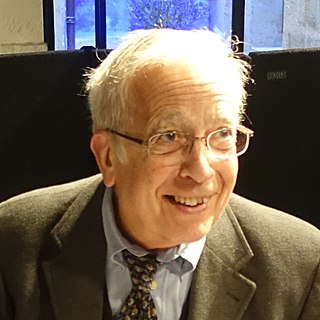
Yann Le Bohec is a French historian and epigraphist, specializing in ancient Rome, in particular North Africa during Antiquity and military history.
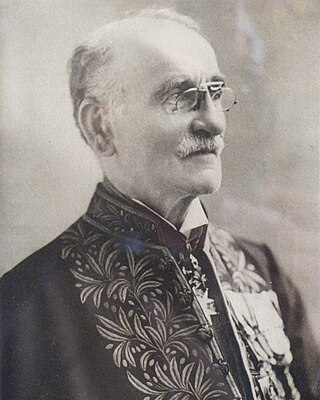
Émile Espérandieu was a French military officer, Latin epigrapher and archaeologist.
William Seston was a 20th-century French historian and epigrapher, a specialist of the history of the Roman Empire. He was professor at the Sorbonne and a member of the Académie des Inscriptions et Belles-Lettres.
Jean Andreau is a French historian, former student of the École normale supérieure (1960) and former member of the École française de Rome. As of 2016, he is research director at the EHESS.
Yvon Thébert was a 20th-century French archaeologist and historian of marxist inspiration.

Raymond Chevallier was a French historian, archaeologist and Latinist.

The Tower of Vesunna is the vestige of a Gallo-Roman fanum (temple) dedicated to Vesunna, a tutelary goddess of the Petrocorii. The sanctuary was built in the 1st or 2nd century. Vesunna was the Gallo-Roman name for Périgueux, in the Dordogne department, in the Nouvelle-Aquitaine region.

The Temple of Juno Caelestis is an archaeological site in Dougga, Tunisia. The ruined temple was dedicated to the Roman goddess Juno, herself an evolution of the Punic goddess Tanit. The temple was built between AD 222 and 235, and is one of the best preserved temples dedicated to Juno in Africa.













